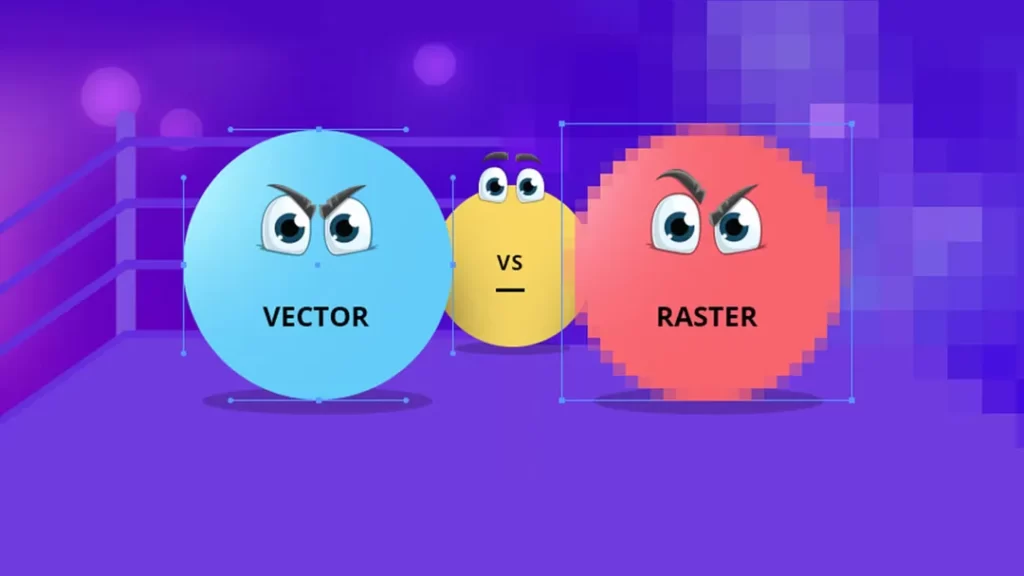In the ever-evolving landscape of gaming technology, the use of vector graphics has been instrumental in transforming pixelated images into precise, high-quality visuals.
From the early days of arcade classics to the latest blockbuster titles, the journey of vector graphics in gaming has been nothing short of revolutionary.
This article explores the history, evolution, and impact of games with vector graphics, tracing their trajectory from humble beginnings to their current influential role in shaping immersive gaming experiences.
The Genesis of Vector Graphics
Birth of Vector-Based Displays
The concept of vector graphics traces back to the early days of computer graphics when the limitations of pixel-based displays became apparent.
Unlike raster graphics, which are composed of individual pixels arranged in a grid, vector graphics utilize mathematical equations to define shapes and lines, allowing for infinitely scalable and precise imagery.
The birth of vector-based displays can be attributed to Ivan Sutherland’s groundbreaking work in the 1960s.
His Sketchpad system laid the foundation for modern computer graphics by introducing the concept of drawing directly on a computer screen using a light pen.
Arcade Pioneers
The emergence of vector graphics in gaming can be largely attributed to pioneering arcade games of the late 1970s and early 1980s. Titles like “Space Wars” and “Asteroids” showcased the potential of vector-based visuals in creating immersive gaming experiences.
One of the most iconic early examples of vector graphics in gaming is Atari’s “Tempest” (1981), designed by Dave Theurer.
It featured vibrant, wireframe-style graphics that set it apart from traditional raster-based games of the era. “Tempest” demonstrated the ability of vector graphics to create fluid, dynamic visuals that captivated players.
Evolution of Vector Graphics in Gaming
Advancements in Technology
As computing power and graphics capabilities advanced, so too did the use of vector graphics in gaming.
The transition from dedicated arcade machines to home gaming consoles and personal computers opened up new possibilities for game developers to explore more complex and detailed vector-based visuals.
3D Revolution
The 1990s marked a significant milestone in the evolution of vector graphics with the advent of 3D gaming. Titles like “Star Fox” for the Super Nintendo Entertainment System (SNES) showcased polygonal 3D graphics rendered using vector-based techniques.
While not true vector graphics in the strictest sense, these early 3D games laid the groundwork for the immersive 3D gaming experiences that would follow.
Vector Graphics in Modern Gaming
In recent years, vector graphics have made a resurgence in modern gaming, albeit in a different form. With the rise of indie game development and retro-inspired titles, developers have revisited the aesthetic appeal of vector-based visuals.
Games like “Geometry Wars” and “Super Stardust HD” have reimagined the classic arcade shooter genre with modern graphics technology, leveraging vector graphics to create stunning visual effects and fluid gameplay mechanics.
Impact of Vector Graphics on Gaming
Visual Fidelity and Scalability
One of the primary advantages of vector graphics in gaming is their scalability and visual fidelity. Unlike raster graphics, which can become pixelated when scaled up, vector graphics maintain crispness and clarity at any resolution.
This allows developers to create visually stunning games that look great on a variety of display devices, from standard-definition screens to high-resolution monitors and beyond.
Artistic Expression
Vector graphics offer game developers a unique tool for artistic expression. The ability to manipulate shapes and lines with precision allows for the creation of visually striking and stylized imagery. From minimalist designs to intricate illustrations, vector graphics empower developers to imbue their games with distinct visual identities.
Performance Optimization
In addition to their aesthetic benefits, vector graphics can also contribute to performance optimization in gaming. By using mathematical equations to define graphics primitives, developers can achieve efficient rendering and minimize computational overhead. This is particularly advantageous in resource-constrained environments such as mobile devices and low-power gaming consoles.
Immersive Experiences
Perhaps most importantly, vector graphics play a crucial role in shaping immersive gaming experiences. Whether creating expansive 3D worlds or crafting intricate 2D environments, vector graphics enable developers to realize their creative vision and transport players to fantastical realms filled with rich visual detail.
The Future of Vector Graphics in Gaming
Advancements in Rendering Technology
As rendering technology continues to evolve, the future of vector graphics in gaming looks promising. Advances in real-time ray tracing and hardware acceleration are poised to further enhance the visual fidelity and realism of vector-based visuals, pushing the boundaries of immersion and realism in gaming.
Integration with Emerging Technologies
Vector graphics are also poised to play a key role in the integration of emerging technologies such as virtual reality (VR) and augmented reality (AR) into gaming. The scalability and precision of vector-based visuals make them well-suited for immersive VR environments and interactive AR experiences, opening up new possibilities for innovative gameplay mechanics and storytelling techniques.
Continued Innovation in Game Design
Looking ahead, the continued innovation in game design and development is likely to drive further experimentation and exploration of vector graphics in gaming. From indie developers pushing the boundaries of artistic expression to established studios leveraging cutting-edge technology, the versatility and adaptability of vector graphics will continue to shape the future of gaming for years to come.
Conclusion
From their humble beginnings in the early days of computer graphics to their current role in shaping immersive gaming experiences, vector graphics have come a long way in the world of gaming. As technology continues to evolve and game developers push the boundaries of creativity and innovation, the journey of vector graphics in gaming is far from over. With their scalability, precision, and aesthetic appeal, vector graphics will continue to play a vital role in shaping the future of gaming for generations to come.

